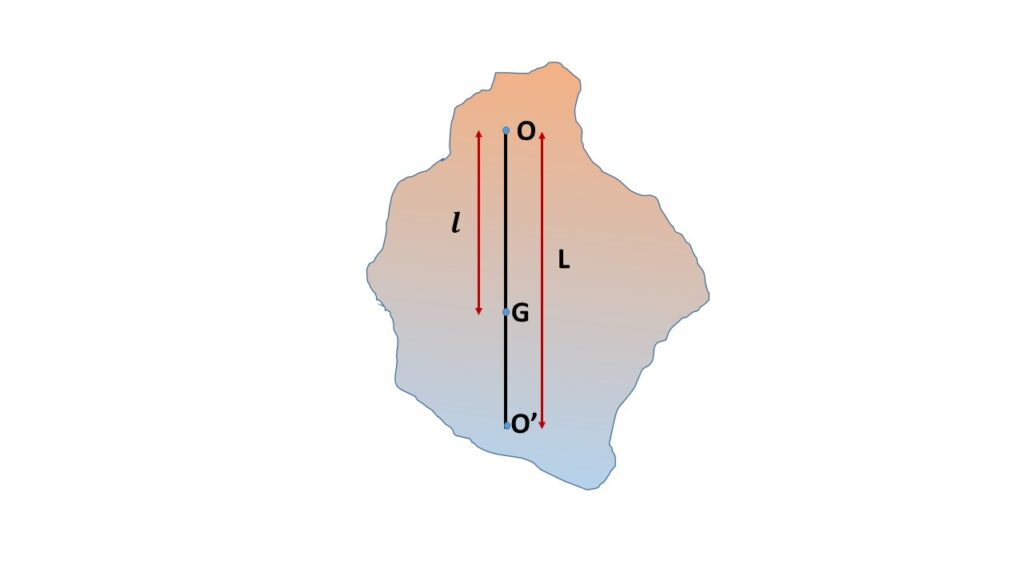Condition for minimum time period of compound pendulum:

Let us consider a compound pendulum is suspended in a vertical plane from the horizontal axis through the point O and \( l \) be the distance of the centre of gravity G from the centre of suspension O.
So the time period oscillation of the compound pendulum is given by,
\( \displaystyle{T=2\pi\sqrt{\frac{K^2+l^2}{gl}}}\tag{1} \)
[ to know the derivation (CLICK HERE) ]
Where, K is the radius of gyration and \( g \) is the acceleration due to gravity.
or, \( \displaystyle{T^2=4{\pi}^2\frac{K^2+l^2}{lg}} \)
Differentiating both side with respect to \( l \), we get
\( \displaystyle{2T\frac{dT}{dl}=\frac{4{\pi}^2}{g}\left(1-\frac{K^2}{l^2}\right)} \)
or, \( \displaystyle{T\frac{dT}{dl}=\frac{2{\pi}^2}{g}\left(1-\frac{K^2}{l^2}\right)} \)
For \( T \) to be minimum \( \frac{dT}{dl}=0 \),
Therefore, \( 1-\frac{K^2}{l^2}=0 \)
or, \( K^2=l^2 \)
or, \( K=l \)
This is the condition for minimum time period of oscillation of the compound pendulum.
Minimum time period of oscillation of the compound pendulum:
Putting the value \( K=l \) is equation (1) we get
\( \displaystyle{T_{min}=2\pi\sqrt{\frac{K^2+K^2}{Kg}}} \)
or, \( \displaystyle{T_{min}=2\pi\sqrt{\frac{2K}{g}}} \)